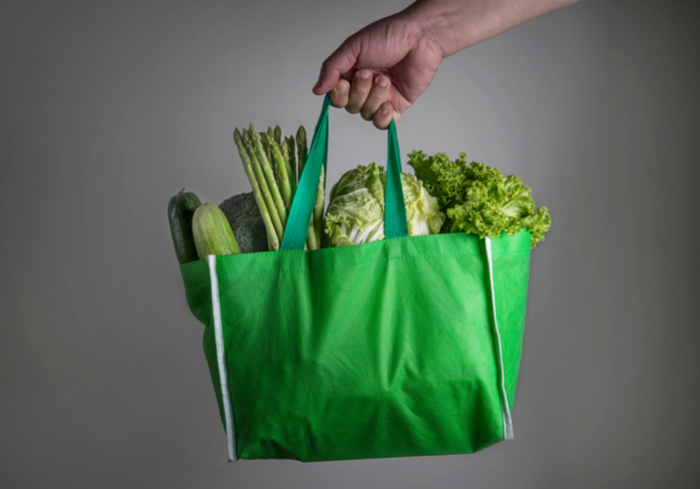Majority Of Consumers Want Digital Coupons, Rewards From Grocers

H-E-B is not only the neighborhood grocery store for many communities in Texas: It’s also an eCommerce retailer with digital features to better reach its customers. The grocer has brought curbside pickup to cities such as San Antonio, Waco and Houston, while rolling out delivery from Shipt and Instacart. The grocer has also expanded its business beyond its borders to serve Texans that have moved to other states but want comfort food from home.
“We’ve been receiving calls for decades from Texans around the country that miss their favorite foods from home, like H-E-B Texas-Shaped Corn Tortilla Chips and H-E-B Café Ole Taste of Texas Coffees,” Martin Otto, chief merchant and CFO at the grocer, told Convenience Store News. “Now, even if you move outside of Texas, you’ll still have a ‘neighborhood H-E-B’ just a click away.”
But not all retailers have the features that allow consumers to shop through whatever channel they choose, whether it be a brick-and-mortar store, website or mobile app. According to the PYMNTS Omni Usage index, large stores only rate 30.2 out of 100 for consumer omnichannel feature satisfaction. When trying to reach customers through multiple channels, here are five digital features that consumers want their grocers to offer.
— Nearly three quarters — or 72 percent — of consumers rate digital coupons as an important omnireadiness feature for grocers. Fareway Stores, a grocery chain in the Midwest, has a digital coupon system for its 117 stores. Through their program, consumers can make their own profiles and receive targeted manufacturers coupons. When a customer reaches the checkout counter, he or she presents their phone and the coupons are automatically added to the order. Through Target’s Cartwheel app, consumers can clip digital coupons that, in some cases, are the same ones found in the local newspaper.
— Sixty-two percent of consumers rate rewards as an important omnireadiness feature for grocers. Hannaford, for example, has My Hannaford Rewards. Through the program, shoppers can earn 2 percent on qualifying purchases that they can redeem each quarter. The grocery retailer also offers shoppers personalized offers like $5 off an in-store purchase and manufacturer coupons. Beyond Hannaford, software provider Shopkick provides the technology for consumers to earn rewards while grocery shopping. Over a year of research, development and beta testing, Shopkick Grocery was found to increase consumer basket sizes to $59 in grocery, drugstore and retail spend per trip versus the $32 national average.
— Thirty-four percent of consumers rate in-store pickup as an important omnireadiness feature for grocers. Walmart, for example, has been testing a 24/7 pickup service at a supercenter in Oklahoma City. Like AmazonFresh customers, Walmart grocery shoppers can order online or by app and can opt to pick up their orders from a kiosk when it’s convenient — even in the middle of the night. Employees do the work of walking around the supermarket, selecting items and bagging them. The bags are then loaded into the kiosk. When shoppers arrive, they punch in their five-digit pickup code, and the machine will hand them their bags.
— Forty-one percent of consumers rate free shipping as an important omnireadiness feature for grocers. At Costco, for example, consumers can get their dry groceries and fresh foods delivered to their house in two days. The delivery option, which is completed through a partnership with Instacart, is free for online orders exceeding $75 from 376 U.S. Costco stores, Reuters reported. But orders totaling less than $35 will be subject to prices approximately 15 to 17 percent higher than those found in-store along with a delivery charge.
— Thirty-seven percent of consumers rate mobile apps as an important omnireadiness feature for grocers. Supermarket operator Food Lion, for example, has a mobile app to make grocery shopping — and saving on grocery shopping through couponing and other perks — easier for customers across its 10-state footprint. In an average month, Food Lion offers more than $250 worth of MVP Load to Card Coupons available through the mobile app and www.foodlion.com. The grocer’s app also includes a recipe finder and digital shopping lists, and couponing customers can use it to digitally load deals to their MVP Cards.
With features like digital coupons and mobile apps, local and regional grocery chains like H-E-B can expand their markets to many more states beyond the reach of their brick-and-mortar locations. Bill Bishop, the chief architect of Illinois-based Brick Meets Click, said that’s exactly what H-E-B has done. “Today, [H-E-B is] the go-to site online for Texas-made consumer products,” Bill Bishop told Progressive Grocer. “This gives this regional grocery powerhouse a national online reach, which is quite exceptional.”